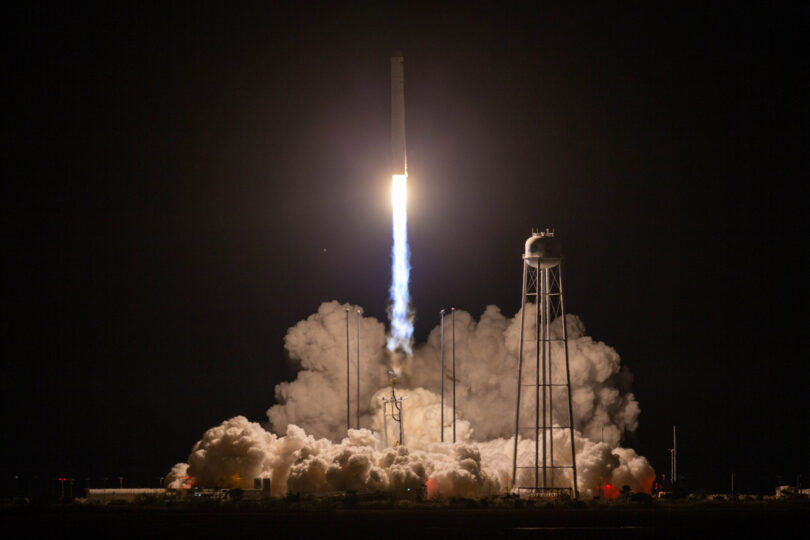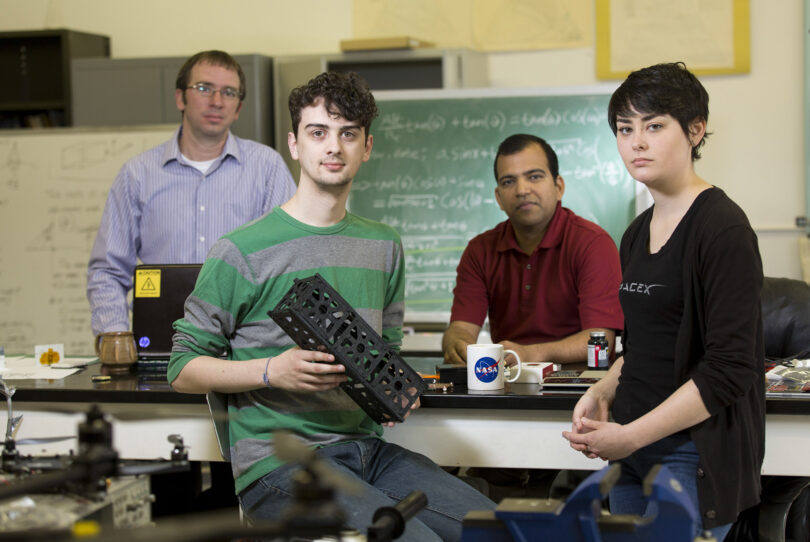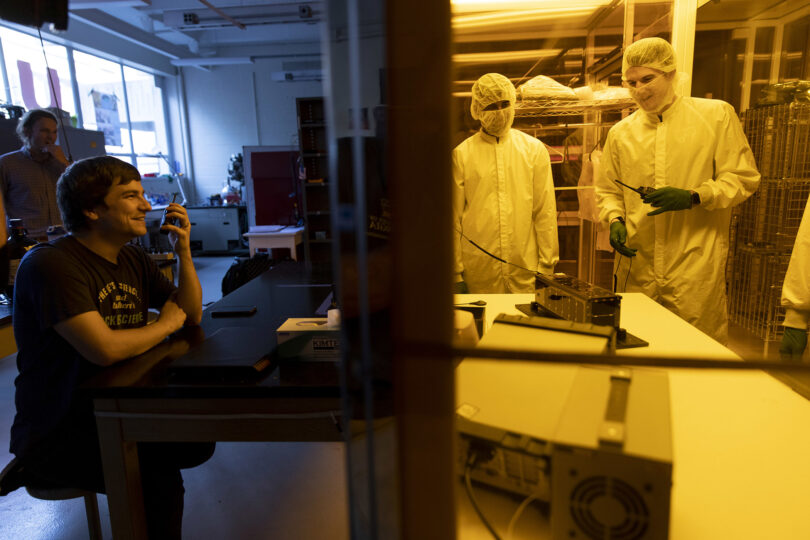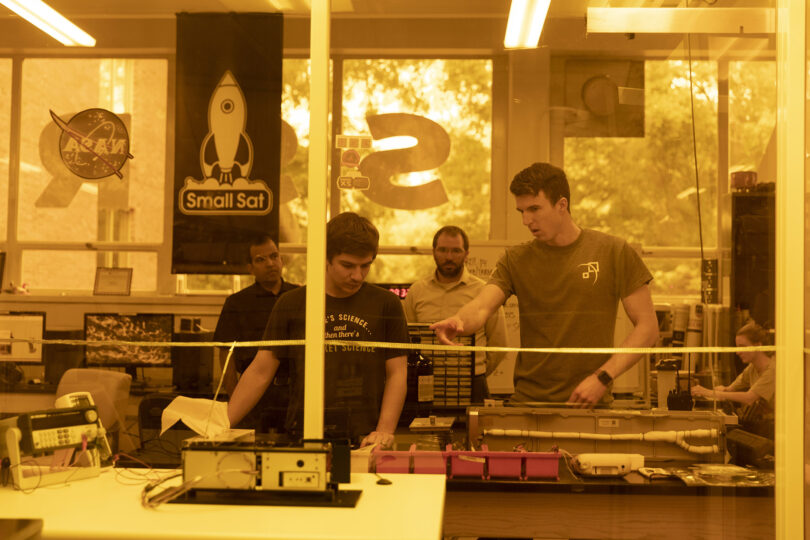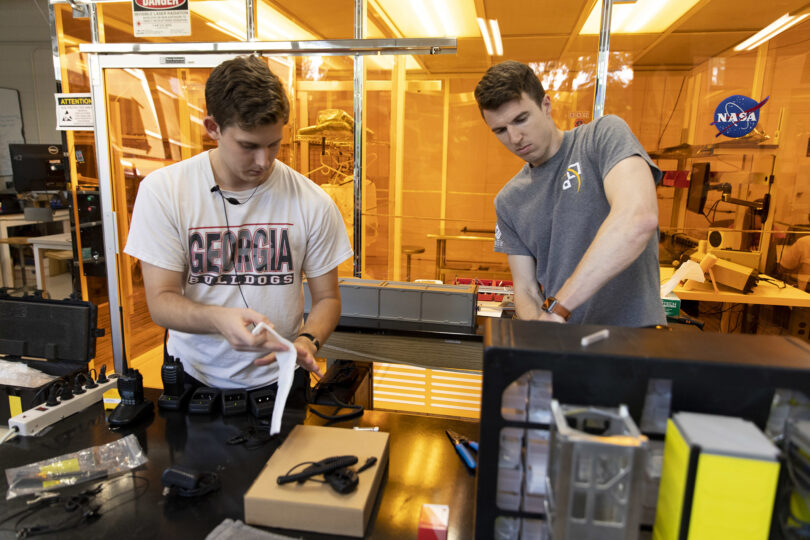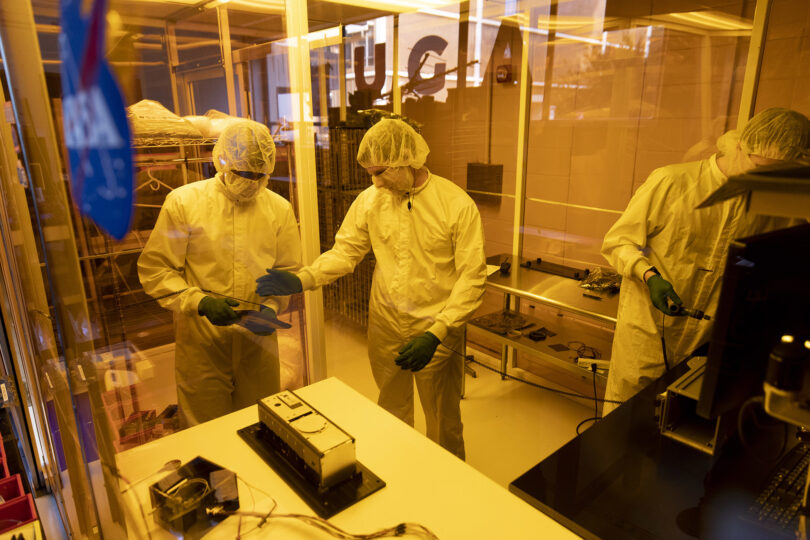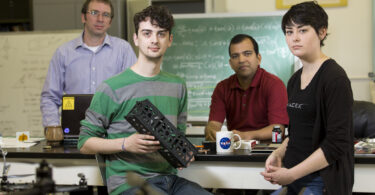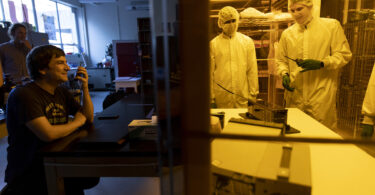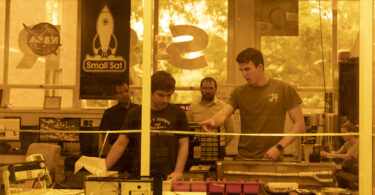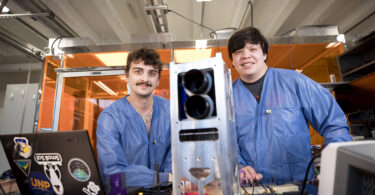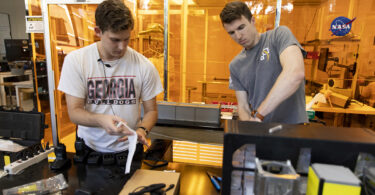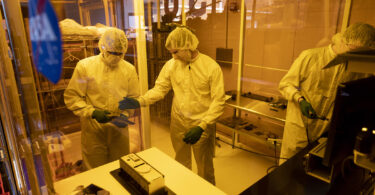A student-led effort to get the University of Georgia’s first research satellite into space is finally a success. It took a few delays, but the small satellite SPOC, short for Spectral Ocean Color, had liftoff aboard an Antares rocket from the Wallops Facility in Virginia on Friday night, Oct. 2.
It docked with the International Space Station on Monday morning and will deploy in a few weeks.
“This is everything,” said Hollis Neel, a UGA graduate and co-founder of UGA’s Small Satellite Research Lab, who watched the launch virtually. “This was the goal that a bunch of us had years ago, which was to send something into space.”
The Small Satellite Research Lab is a collaboration between students and faculty researchers across multiple disciplines to create a new class of small satellites to support UGA research through big dreams and innovation.
“This project would be nowhere without students,” said Deepak Mishra, a UGA geography professor and director of UGA’s Small Satellite Research Lab. “Undergraduate students came with the skills, and faculty researchers gave them a scientific purpose.”
Once deployed, the SPOC will monitor the health of coastal ecosystems from space. The satellite is poised to provide valuable data to researchers at UGA and beyond. It features an advanced optic system that can zoom in on coastal areas to detect chemical composition and physical characteristics on ocean and wetland surfaces—all of which fits into a spacecraft that’s about the size of a loaf of bread.
Getting off the ground
In the span of a week, two launch delays drew out the anticipation for this long-awaited success. Originally scheduled for Sept. 29, the launch moved to Oct. 1 due to anticipated weather conditions. The university held a prelaunch virtual event for the Bulldog community to celebrate the accomplishment, and everything seemed to be ready for a perfect Thursday night launch. But with less than three minutes before liftoff, ground support equipment problem forced NASA to scrub the launch.
Fortunately, the faculty and staff who built the satellite have developed plenty of patience. They put in years of hard work and determination to overcome other setbacks—including the current global pandemic.
The lab began in 2016 with a handful of students who dreamed of sending something—anything really—into space.
“I was looking for the most difficult thing I could find and throwing myself at it,” said Neel, who earned a bachelor’s in mathematics and a master’s degree in geology from UGA. “That’s a theme you’ll find with a lot of us: We really enjoy a challenge.”
To turn challenge into reality, they needed funding and facilities. They teamed up with UGA researchers, who guided that dream into something practical. David Cotten, assistant research scientist and associate lab director, worked closely with a host of other UGA faculty advisors to devise research capabilities and solve the challenges faced during the satellite’s creation.
The team won a highly competitive research grant from NASA to secure a spot on a rocket and earn funding. Over the months and years, the lab has grown to include over 100 students who get hands-on experience in fields ranging from physics and electronics to geography and engineering. Several students, including Neel, have come into the program and then graduated, a few earned coveted NASA internships, and four have been hired by NASA’s Ames Research Center in Silicon Valley and others have taken jobs at private aerospace firms.
But before this launch, the team underwent a few setbacks and postponements. SPOC was supposed to launch in March, but a malfunction discovered weeks before takeoff spoiled that opportunity.
The pandemic further delayed that process. The lab itself, repurposed space in the Physics Building, is often teeming with dozens of students working closely together. But it had to be shut down in the spring and summer. Now, only a handful can be in the lab at once.
We have liftoff
But finally, the commitment has paid off.
While Friday was finally a night for celebration, everyone still has to wait a few more weeks for the real test to begin.
SPOC is now traveling to the International Space Station in a cargo spacecraft. After a few weeks, it will be deployed into orbit, and the satellite’s research capabilities will be put to the test.
“The most important date for our success will be sometime in November when the satellite is actually deployed, and the scientific mission begins,” said Mishra.
The lab hopes to have a second satellite, MOCI, which stands for Multi-view Onboard Computational Imager, ready to launch in fall 2021. And a third satellite is in development with help from a local nonprofit, Let’s Go to Space.


